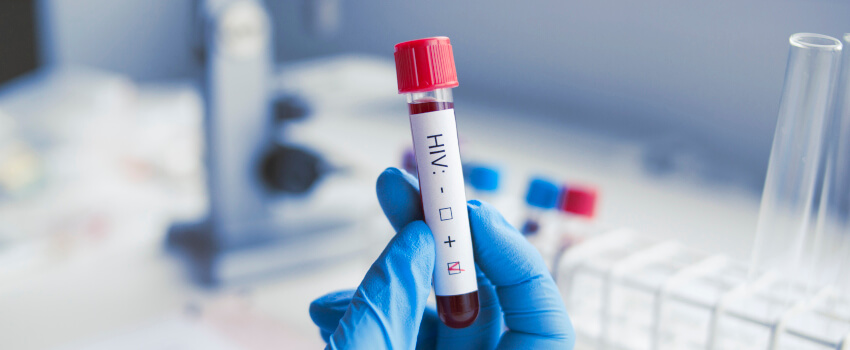New ‘multidimensional single cell analysis’ technology could bring AIDS cure closer

A novel technology capable of identification and detailed characterisation of latent HIV infected cells may take us a step closer to finding a functional cure for AIDS.
The new technique makes it possible to identify the presence of HIV in so-called ‘reservoir’ cells taken directly from people living with the HIV-1 virus, while simultaneously characterising key surface markers expressed on these cells. Analysis from these types of experiments could potentially inform future strategies to eliminate HIV – by helping to explain how infected cells are able to resist the body’s immune responses and survive in latent form for years.
The technical approach– named phenotypic and proviral sequencing (PheP-Seq) - has been developed by scientists from a consortium of research institutions led by the Ragon Institute of MGH, MIT and Harvard. They used it to analyse more than 530,000 individual peripheral blood cells - and 396,000 single lymph node cells - taken from people living with HIV-1 who had received continuous antiretroviral therapy (ART) for a decade or more. Discussing their new process in an article in Nature, the consortium explained that “technical limitations” had previously prevented profiling of cell surface phenotypes directly ex vivo. This meant that researchers were forced to rely on in vitro or biocomputational methods, which could be less representative of the true disease pathology. The new technique complements innovations from the field of immuno-oncology: submitting cells to single cell sequencing (in this case to confirm the presence of the HIV-provirus) and additionally using antibodies to characterise surface biomarkers expressed in these cells.
The consortium also announced two main findings from the PheP-Seq studies: firstly that blood cells containing intact HIV-1 proviruses often had surface biomarkers that indicated increased resistance to cytotoxic T and NK cells. Secondly, viral reservoir cells from lymph nodes “exhibited a phenotypic signature primarily characterized by upregulation of surface markers promoting cell survival, including CD44, CD28, CD127 and the IL-21 receptor.” Some cells collected within two years of study participants beginning ART also showed increased expression of both markers, although the resistant cells became easier to identify later on.
The researchers also concluded from their work that “only small subsets of infected cells with optimal adaptation to their anatomical immune microenvironment are able to survive during long-term antiretroviral treatment” – while the data also suggested that the immune system can apply effective immune selection pressure on the majority of reservoir cells. “High-throughput, single-cell sequencing now allows us to take a precise look at the surface profile of the very small numbers of infected cells that persist lifelong despite antiretroviral therapy,” said the report’s senior author, Mathias Lichterfeld.
“With this knowledge, we are able to understand their susceptibilities and vulnerabilities, and can develop a tailored immune response to target these cells.”
The consortium noted that the phenotypic alterations they had observed in the study varied according to the intensity of different individuals’ immune response, and were therefore unlikely to act as universal biomarkers of viral reservoir cells for all HIV-1 patients. However, it did conclude that: “clinical strategies designed to intensify and accelerate immune selection of HIV-1 reservoir cells may be of benefit for reducing HIV-1 long-term persistence and inducing a drug-free remission of HIV-1 infection.”
“The ability to visualize individual reservoir cells was a pipe dream, and now has become a reality,” added study co-investigator Bruce Walker. “Now we must build on this information to eradicate these cells.”
The technological breakthrough represented by PheP-Seq is the second significant advance in our knowledge of HIV reservoir cells in recent months, following a Duke University study in November that shed new light on a likely key mechanism underlying HIV-1 latency. That report also proposed a recently discovered anti-cancer drug as a promising candidate for inhibiting the SUMOylation activity behind the establishment of latent proviruses.
Read more by LGC on recent breakthroughs in HIV reservoir cell research.
|
TRC has more than 40 years’ experience working through some of the most complex synthetic pathways to deliver you high quality research chemicals. Our world-leading chemists engineer specific solutions for customers, and we have a uniquely large range - including many novel bioactive molecules for research into infectious disease. The TRC portfolio also features wide ranging antiretroviral therapy agents - including protease inhibitors, integrase inhibitors, NRTIs, NNRTIs, and diverse latency reversal agents. ATCC is the world leader in virology research materials - providing unique cell lines for enhanced viral production, in addition to wide ranging viral strains.
|
